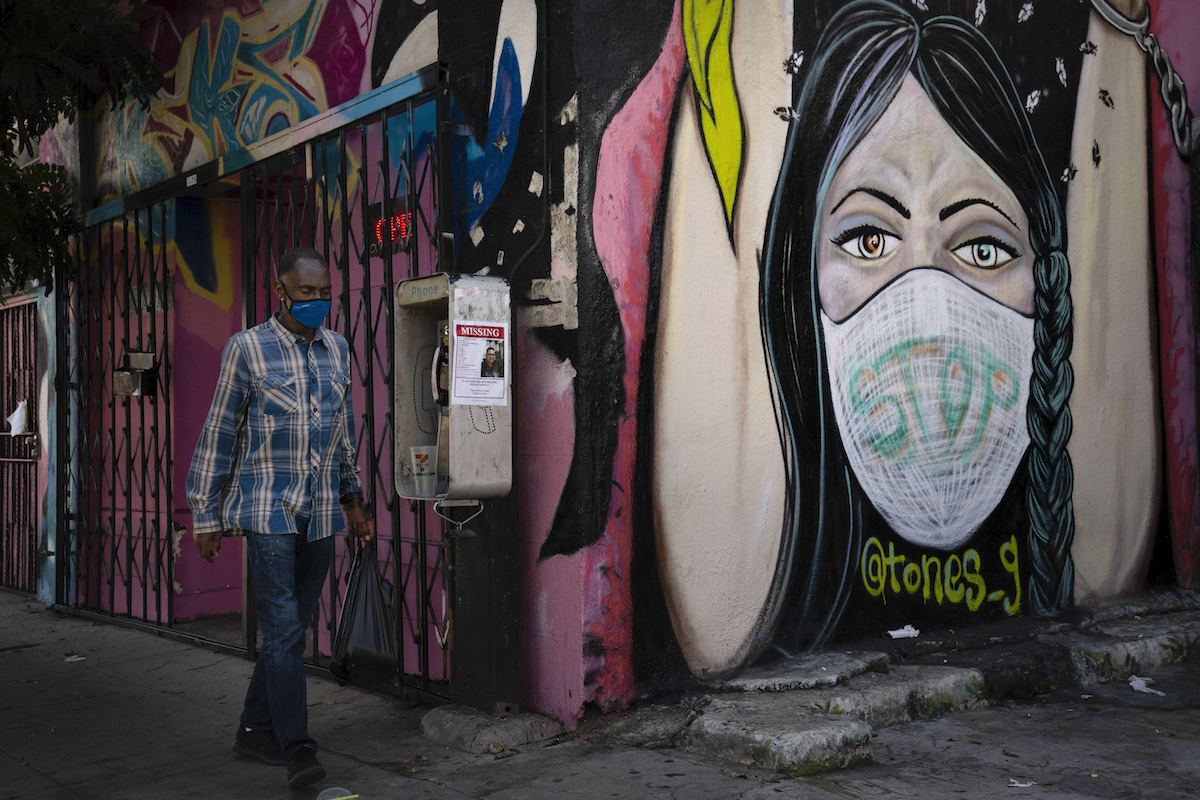

A man wearing a mask walks past a mural Thursday, October 1, 2020, in Los Angeles. (AP Photo/Jae C. Hong)
As we enter the winter months, a surge in COVID-19 cases across the United States means that elected officials may once again turn to stay-at-home orders to help control the spread of the virus. Yet these directives poses challenges to many U.S. households—particularly Latino immigrants. What do stay-at-home orders mean for families whose homes may not be healthy? My research with Latino immigrants renting in Los Angeles points to two major challenges that stay-at-home orders pose for these households.
The first challenge relates to housing quality. According to the U.S. Census, Latino renter families are more likely than non-Hispanic white renters to live in units that have one or more physical problems, including mold, drafts, damp, and pests. Public health research tells us that these common issues are directly linked to respiratory illnesses like asthma.
Although building owners are legally obligated to maintain units, interviews with immigrant Latino families show evidence of landlord disinvestment. For families who live in badly maintained rental properties, staying-at-home means greater exposure to hazardous living conditions that cause respiratory problems. If these renters do contract COVID-19, those with asthma are at increased risk of severe illness.
My research also suggests that the pandemic has exacerbated maintenance disinvestment among some landlords. As rent debts accumulate, tenants report that their requests for repairs have gone unanswered. This issue is particularly salient for undocumented families, who were ineligible for the first round of CARES Act relief and report being further behind on rent than their citizen peers.
The second challenge relates to the social consequences of staying-at-home. Recent immigrants often “double-up” with friends, family and acquaintances to help shoulder the burden of housing costs, particularly in expensive gateway cities like Los Angeles. These living arrangements provide important financial and social support, particularly as migrant families gain their footing in new contexts.
However, staying-at-home can strain these living arrangements in household environments where space is at a premium. Sociological research shows how doubling-up requires careful enumeration of not only rent payments, but also cleaning schedules, childcare, and use of shared spaces—all of which can be disrupted by stay-at-home orders and increased financial precarity. Failure to meet stated and unstated expectations can damage relationships and result in housing instability, often on short notice.
Staying-at-home is an invaluable public health tool. However, without additional financial support, these orders create negative spillover effects for vulnerable households. Among Latino immigrant families, undocumented renters are severely impacted, as these families frequently double-up with others, deal with landlord disinvestment in their units, and face disruptions in the service, care-work, and construction industries, all while being ineligible for federal relief.
To ensure that staying-at-home works for all, we need federal relief payments and meaningful rent debt forgiveness —not deferral— for every family impacted by the pandemic. Landlords must also fulfill their legal obligation to maintain their tenants’ homes. In the long term, the COVID-19 pandemic underscores the public health urgency of widening access to affordable and dignified housing.
***
Steven Schmidt is a Ph.D. candidate in the sociology department at UC Irvine.


